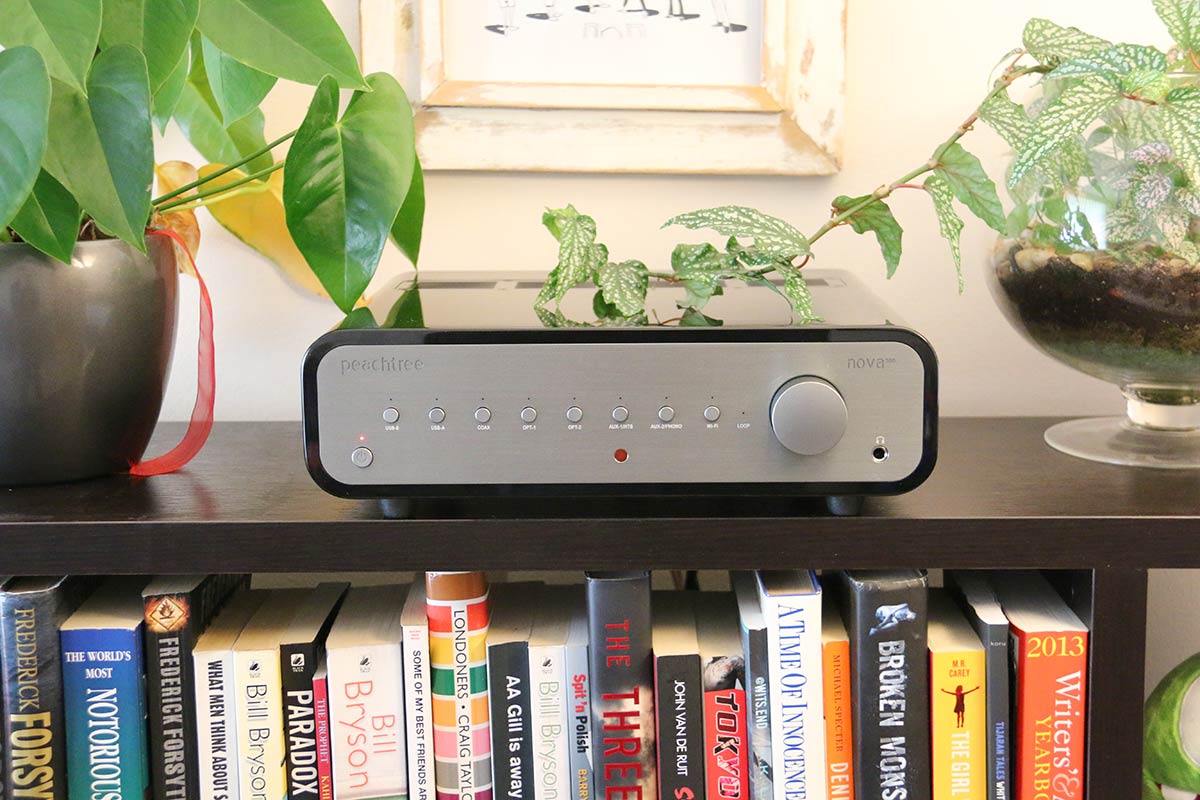
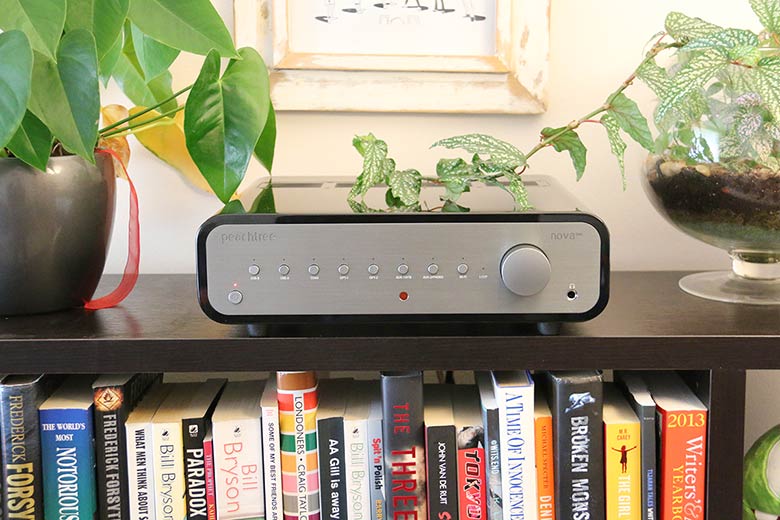
The Master Switch


The Master Switch
An amp should be the center of your hi-fi world. Everything flows into it, and everything flows out of it. There's a lot of mystique that has sprung up around amps, and a lot of related jargon that has been created over the years, but the good news is that the standard is really high now - even for budget amps. Below, we've highlighted this year's top models, and no matter what budget you're on, there's a model here that'll supercharge your sound system. We're covering only integrated amps here - no discrete power or preamplifiers - and we've tried to keep prices sane. And to complete your system, check out our lists of the best bookshelf speakers and best floorstanding speakers.
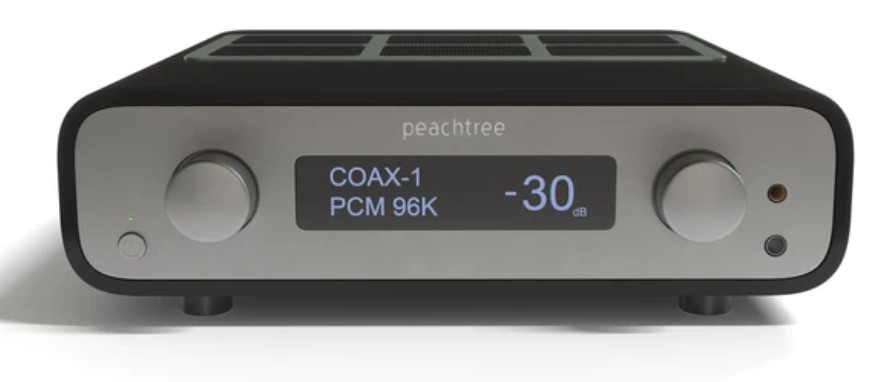 Weight: 15 lbs
Weight: 15 lbs
Power: 300W/8Ω (RMS)
DAC: Yes
What We Like: Gorgeous sound, HDMI input, exceptional front panel display.
What We Don’t: No phono preamp, so not the best option for vinyl lovers.
Peachtree Audio have quietly become one of the best amp makers on the planet. Their new Carina takes everything they learned from their Nova and Decco lines and shoves it into an absolutely gorgeous, wood-framed package. The audio quality is best described as thunderous, with taut and muscular bass and a crystalline quality in the highs that other pricey amps, like the similarly-priced Hegel H95, below, can only hint at. Paired with a good set of bookshelf or floorstanding speakers, the Carina quickly becomes essential. Twin ESS 9068 DAC chips stand ready to handle a range of digital inputs—including HDMI, allowing the Carina to do double duty for both hi-fi and home theater. The amp gets extra points for the big, bright digital display that is easy to read from across the room.
One thing to note is that the Peachtree Audio Carina does not have an included phono preamp in its guts. That’s a clear choice—this is first and foremost an amp for the digitally-minded—but it might alienate those who are looking for a one-box vinyl solution. If that’s you, then you still have a number of options on this list. Check out the Schiit Ragnarok for a similar price with an included MM phono pre, or the exceptional and exceptionally affordable Denon PMA-600NE. But if the lack of a vinyl input isn’t a big deal, then Peachtree’s Carina is the single best amp you can buy.
See the Peachtree Audio Carina
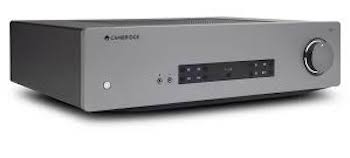 Weight: 18.3 lbs
Weight: 18.3 lbs
Power: 60W/8Ω (RMS)
DAC: Yes
What We Like: Fun and lively sound, great design and functionality.
What We Don’t: Lacks the power and energy of the Peachtree Carina above.
The Cambridge Audio CXA61 is an outstanding amplifier with terrific digital capabilities. It’s the latest entry in the company’s CX series and it fixes almost all the issues we had with the CXA60 amp. You get a full range of analog and digital inputs in a beautifully designed and distinctive interface. But most importantly, you get great sound. The audio quality is lively and rambunctious, injecting tracks with real life. This certainly isn’t an amp for those who enjoy reference-grade sound. If you do want something with a slightly more neutral presentation, try the Parasound NewClassic 200 Integrated or the CXA81 - an 80-watt amp from Cambridge with slightly more restrained sound.
You could make an argument that the CXA61 amplifier could beat the Peachtree Audio Carina in the number one spot. However, it doesn’t have the raw power and energy that the Carina has and we just couldn’t help feeling that the price was too high. At $999, it’s $400 more expensive than the original CXA60. To be fair, if you’re prepared to put up with a few extra annoyances, like the reliance on a USB dongle for Bluetooth, then you can probably save yourself some money and buy that amp instead. However, none of that changes the fact that the Cambridge Audio CXA61 is one of the most enjoyable amps we’ve tested this year...Read our in-depth review
See the Cambridge Audio CXA61
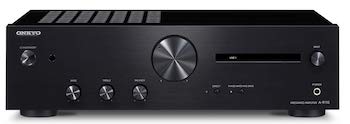 Weight: 15.4 lbs
Weight: 15.4 lbs
Power: 50W/4Ω (RMS)
DAC: No
What We Like: A stunning budget model with huge sound.
What We Don't: It would have been nice to see even a basic DAC included.
Onkyo's A-9 series has been a firm favorite of ours for some time. The original A-9050 was featured on this list previously, and the new Onkyo A-9110 makes some significant improvements. While the casing has undergone a slight redesign, the biggest changes are internal. Most of them have to do with improved amp circuitry, and circuits that reduce the length of time it takes for the audio signal to travel from place to place. The result is genuinely brilliant sound. For an amp that costs just over $300, you're getting audio quality that is just staggering. This is easily a top budget pick, and it also helps that it comes with a wide range of connections, including a phono stage.
However, we do wish that the A-9110 - the budget model in this range - included some sort of DAC. Even a cheap one would have been nice. The lack of one means you'll need to buy a separate converter as well, although this shouldn't break the bank. It's a frustrating choice, given that the more expensive version of the A-9110 – the imaginatively-named A-9130 - actually has a DAC, allowing direct connection to a tablet or PC. All the same, this is a superb update, and a lock for the best budget amp for most people...Read our in-depth review
See the Onkyo A-9110
 Weight: 15 lbs
Weight: 15 lbs
Power: 90W/8Ω (RMS)
DAC: Yes
What We Like: Surprisingly agile, powerful amp with great features.
What We Don’t: Turgid design, awful remote.
If you love vinyl records, there’s more than one reason to use the Denon PMA-600NE to complete your system. First, it has an excellent phono preamp included, meaning you don’t need a separate one. Second, it incorporates an outstanding analog mode feature, which bypasses the amplifier’s digital circuitry completely. The pure, warm sound that results is definitely worth the trouble. And unlike less expensive apps, like the Onkyo A-9110, there’s both Bluetooth and a solid DAC included here, so it can take digital sources without breaking a sweat. If you’re looking for a stereo amp to handle a turntable, and you like your audio to have some real weight to it, the PMA-600NE is the one to pick.
However, this amp is made by Denon, so some design features are practically baked in. The remote is terrible – designed with what feels like no thought for the user. And while the PMA-600NE does have a couple of nice aesthetic touches, like the old-school font on the front end and the prominent knobs, they can’t save the amp from looking absolutely dull. Being utilitarian is fine, but very little about this amp is appealing to the eye in any way. Good thing it sounds so sweet.
See the Denon PMA-600NE
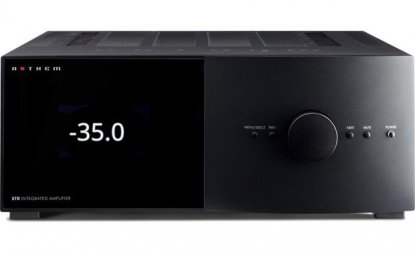 Weight: 40lbs
Weight: 40lbs
Power: 200W/8Ω (RMS)
DAC: Yes
What We Like: Room correction, stellar sound, super-clean display.
What We Don’t: Very expensive, compared to many on this list.
The Anthem STR is a wonder. It's a beautifully designed integrated amplifier, with very decent power (200 watts at eight ohms), and a great on-board DAC with the ability to handle DSD. It also has a huge range of inputs and outputs, easily comparable to amplifiers like the Peachtree Audio nova300. It's true that we could pick five or six-figure amps for this spot, but the STR delivers all that they do, at a significantly lower cost - even if the price tag does slot it firmly into the high-end bracket!
The STR has plenty going for it, including Anthem's fast-becoming-legendary room correction system. It sounds both thunderous and pinpoint-precise. Although it's a sound that can be a little rudimentary without the room correction turned on, once it's activated, it's absolutely gorgeous. Ultimately, we don't think that it's worth the extra $2,000 over the nova300, which offers great sound and usability at half the cost, but this is still a brilliant amplifier. If you can afford it, then it will make one hell of a centerpiece in your hi-fi system.
See the Anthem STR
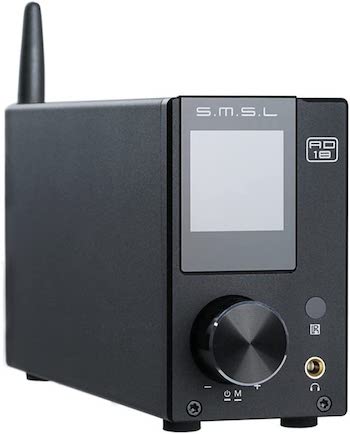 Weight: 3.2 lbs
Weight: 3.2 lbs
Power: 80W/8Ω (RMS)
DAC: Yes
What We Like: Amazingly powerful for such a small amp.
What We Don't: Not ideal for high-end speakers - even in smaller rooms.
Although they are best known for their headphone amps and DACs, China’s S.M.S.L have produced a killer little speaker amp as well. The AD 18 may be less than 10 inches long, but it manages to output a genuinely surprising amount of power, delivering more than enough juice for even the most demanding speakers. We were pleasantly surprised at how well this amplifier performed in a smaller room. While it doesn’t have the grunt of something like the Onkyo A-9110, it’s much friendlier for those with limited space.
The most glaring downside with the S.M.S.L AD 18 is that for all its charms, it’s still a budget amplifier. That means that the sound will be ruthlessly exposed by high-end speakers. You’re better off investing in a slightly pricier amplifier, like the Cambridge Audio CXA61, if you want to go in that direction. That said, there’s a lot to love here, including a solid DAC, Bluetooth compatibility, and a handy screen. It also helps that the AD 18 looks fabulous.
See the S.M.S.L AD 18
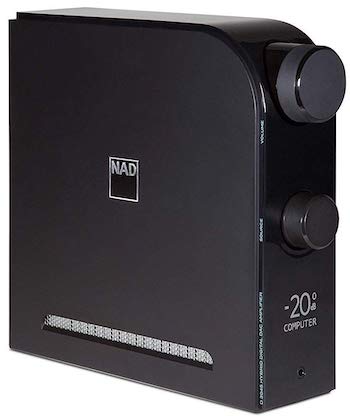 Weight: 5.7 lbs
Weight: 5.7 lbs
Power: 60W/8Ω (RMS)
DAC: Yes
What We Like: Some genuine improvements to an already fantastic model.
What We Don't: Price is a little high right now, narrow power range.
We previously named the NAD D3020 V2 as our top budget app, and this is the next generation. The NAD D3045 doubles the power output, to 60 watts, and adds some genuinely innovative features. Our particular favorite is the two-way Bluetooth, meaning you cannot only send audio to the amp itself, but also have the amp send audio to, for example, a pair of wireless headphones. You get a phono stage for a turntable, and even an HDMI ARC channel for using this amp with a TV. NAD have really outdone themselves this time, and while this amp is no longer budget friendly, it gives you just about everything you could possibly need.
The one issue we have with it is that it's little too expensive at launch. For comparison, the original NAD D3020 V2 costs $300 less, and while it doesn't have the same advanced features, many of them – like the phono preamp and aptX Bluetooth – are still present. As good an amp as this is, paying an extra $300 for it feels like a bit much. We're also a little surprised at the power range - 60-watt RMS, and 80 watts peak. That's surprisingly narrow, and although it's not a major issue, it could make speaker choice tricky. All the same, there are very few amps on this list with quite as many features, and if the price drops a little, this is going to rocket into the upper echelons of our picks.
See the NAD D3045
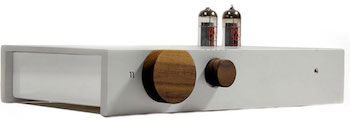 Weight: 12 lbs
Weight: 12 lbs
Power: 60W/8Ω (RMS)
DAC: Yes
What We Like: Gorgeous design, rich tube sound.
What We Don’t: Quite expensive for what you get.
The Heaven 11 Billie is the single most beautiful amplifier we’ve ever seen. We mean this sincerely. There’s something decadent about it – the hefty, brushed-metal housing, the prominent tubes, the distinctive wooden controls. The Billie revels in tube sound, coating your music in glorious, buttery warmth. There are surprisingly few tube amps that we’d swear by, but the Heaven 11 Billie will make you a believer.
It must be said that, as good as the Billie is, it’s also comparatively expensive. You get what you pay for – if you do spring for it, you’ll be rewarded with one of the most enjoyable amps in existence – but it’s not for everyone. If you want something a touch more analytical, if not quite as assured in looks, try the Parasound NewClassic 200 Integrated, which is a bit more affordable. By the way, Heaven 11 recently released a remote for the Billie, which is great - the lack of one was a major issue for us, so it's great to see it rectified.
See the Heaven 11 Billie
 Weight: 18.3 lbs
Weight: 18.3 lbs
Power: 110W/8Ω (RMS)
DAC: Yes
What We Like: Superb range of features, elegant sound.
What We Don’t: Not an amp for beginner hi-fi listeners.
If you know your way around a hi-fi system, then the Parasound NewClassic 200 Integrated will be a hugely rewarding choice. It packs a stunning range of features into its slim frame, bypass input for surround sound, a crossover for bass management, and an excellent phono stage. It’s a dream to use and the audio it produces, while a tad analytical, still feels elegant and assured. We think it’s a better option than something like the Schiit Ragnarok, which is a little more expensive and offers slightly fewer features.
Despite our love for this amp, we must mention that it’s not suited for beginners. Both in terms of price and in terms of functionality. To get the best out of it, you need a certain level of knowledge to utilize the features, making it a daunting option for most people. It’s a superb amplifier in its own right and an easy top ten pick, but you need to know what you’re doing before you buy. We also would have loved to see some sort of Bluetooth functionality included - although, if we’re being honest, the omission feels very deliberate here.
See the Parasound NewClassic 200 Integrated
 Weight: 23.4 lbs
Weight: 23.4 lbs
Power: 60W/8Ω (RMS)
DAC: Yes
What We Like: Muscular and satisfying sound quality, elegant design.
What We Don’t: Tries to do too much, with mixed results.
Many in the US won’t be familiar with the Norwegian company Hegel, but we hope that will change because they make some truly terrific gear. The H95 is a wizard of a machine that delivers muscular and powerful sound quality. The audio is helped along by the company's groundbreaking SoundEngine 2 tech, which significantly reduces distortion. It also helps that it has an elegant design— we prefer it to the slightly more expensive Peachtree Audio Nova300, currently in our top spot. It should fit into any hi-fi system, and with 60 watts of power, you’d have to work hard to attach it to a speaker it can’t drive.
Like the Sonos Amp, the Hegel H95 has some streaming capabilities. You get Apple AirPlay 2, and UPnP functionality, both of which are nice to have… But having tested the H95, we can’t help thinking that they feel tacked on. This feels like an amplifier first, and a streamer second, and it performs much better when using a traditional wired signal. It’s a great amplifier, but less expensive models, like the Heaven 11 Billie, arguably offer a better experience.
See the Hegel H95
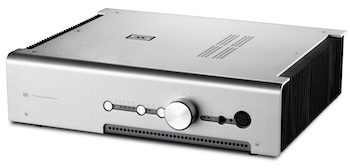 Weight: 32 lbs
Weight: 32 lbs
Power: 60W/8Ω (RMS)
DAC: Optional
What We Like: Incredibly transparent sound quality.
What We Don’t: We preferred the old design.
First thing first: this model is an update to Schiit’s classic Ragnarok, and should be known as the Ragnarok 2. However, Schiit have taken the unusual step of simply calling it the Ragnarok on their website, which is somewhat confusing. Regardless, this update is a winner in terms of sound quality and design. The audio is transparent and open, with a terrific level of depth. It rivals larger amps, like the Anthem STR, which is quite something, given that it costs less than half that amp’s price. The Ragnarok is the ideal amp for those who seek absolute clarity and neutrality from their speakers. With 60 watts of RMS power, you’re not going to have any trouble driving them.
We do have to say that the Ragnarok's redesign, with the added heat sinks, doesn't really do it for us. It doesn't look as clean as the previous model, and having chatted with other audio heads, it's clear we aren't the only ones who think this. Regardless, this is a minor point, and we’re very pleased that Schiit continues to update their amazing product line. By the way, you can add an optional DAC and phono preamp for $300 more, which we highly recommend.
See the Schiit Ragnarok
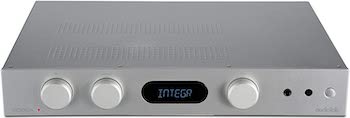 Weight: 17.2 lbs
Weight: 17.2 lbs
Power: 50W/8Ω (RMS)
DAC: Yes
What We Like: Big soundstage, and a good range of features.
What We Don’t: Doesn’t really do enough to stand out from the competition.
We like the Audiolab 6000A for its large and detailed sound stage. It really does seem to lend a system a little bit more presence and realism, making it easy to pick out the location of individual instruments. Plenty of amps do this already, but Audiolab seem to make a point of focusing on it, and it really pays off. And in general, the audio quality here does well and is matched by a good range of features, including Bluetooth.
The most glaring downside to the Audiolab 6000A is that it simply doesn’t do enough to stand out from the crowd. The design is dull, playing second fiddle to the classy Cambridge Audio CXA61. It has Bluetooth, but the less expensive NAD D3045 can send it both ways. And the DAC on the Totem Kin Amp does a better job. Put simply, the 6000A is a good workhorse amplifier that does everything well, but can’t quite outlast the competition.
See the Audiolab 6000A
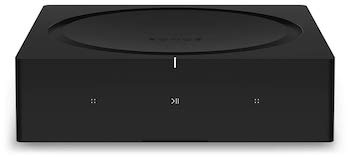 Weight: 4.6 lbs
Weight: 4.6 lbs
Power: 125W/8Ω
DAC: Yes
What We Like: Brings Sonos functionality to a traditional stereo amp.
What We Don't: Sound is not as good as other models in this price range.
Finally, Sonos has released an amp! Streaming music through a Sonos system has always been incredibly simple, and with the Sonos Amp, their services can now be hooked up to a set of passive speakers. The Amp functions in an identical way to any other stereo amp, with the added benefit of Wi-Fi. Once that's hooked up, you can stream music from Spotify, Tidal, or any other service. It doesn't hurt that the Amp is a real looker, with a slick design that compliments other Sonos products.
That being said, we suspect this is an amp you'll go for based on convenience, rather than pure sound quality. If you want something with a little bit more liveliness and detail to the sound, try the Denon PMA-600NE, above. While you won't get the same ease of use with these models, you'll get slightly better audio quality than the Sonos Amp. We also couldn't get an answer out of Sonos as to whether the rated 125 watts per channel was RMS or peak. However, the range of features in the Sonos Amp makes it a lock for this list, and it's definitely an option you should consider for your home system...Read our in-depth review
See the Sonos Amp
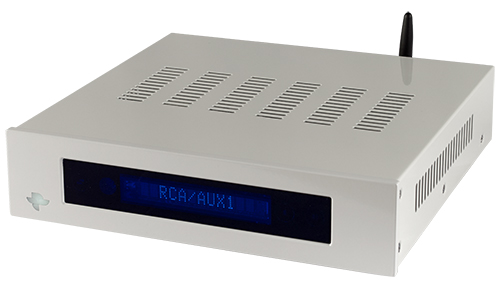 Weight: 5.3 lbs
Weight: 5.3 lbs
Power: 100W/8Ω (RMS)
DAC: Yes
What We Like: Crisp sound, clever design.
What We Don’t: Doesn’t quite offer enough to compete with other models in this price range.
The KIN Amp is Totem Acoustic’s first amplifier. They previously only made speakers, which are fantastic, but the KIN Amp impressed us. The sleek design and white housing look superb, and the sound matches it. We found it crisp and elegant, with excellent detail. The KIN Amp is also quite versatile, with a good range of features, including aptX HD Bluetooth. There is also a surprisingly solid set of tone controls, all handled with a capable remote.
But here’s the problem: when matched up against the less-expensive Sonos Amp and the NAD D3045, the KIN Amp lacks a little something. It does everything we expect it to and sounds good, but we can’t help but feel like it’s holding out on us. It doesn’t have the Wi-Fi functionality of the Sonos Amp, or the two-way Bluetooth and versatile design of the NAD. It’s a good amp, and definitely worth considering, but not quite in our top ten. We look forward to the next iteration!
See the Totem Kin Amp
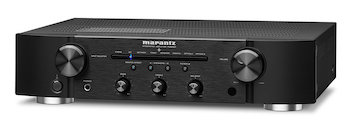 Weight: 16.7 lbs
Weight: 16.7 lbs
Power: 45W/8Ω (RMS)
DAC: Yes
What We Like: Clean, modern, forward-thinking.
What We Don't: A little underpowered, no Bluetooth.
Marantz continue to be a viable option for those buying a new stereo amp. You’ll have to be OK with a somewhat dull design, but there’s no denying that the sound that comes out of the PM6007 is excellent. Marantz have installed a new DAC chip, and the result is spectacular: rich and powerful, with good detail. You also get two filters for customizing your sound, and an excellent phono stage— one that rivals the Denon PMA-600NE, which is our top pick for vinyl.
Where the Marantz PM6007 falls down is connectivity. There is no Bluetooth to speak of, which means that all connections here will need to be fully wired. While that’s not a deal breaker, it’s frustrating that for all the attention paid to sound quality and customization, Marantz remain firmly stuck in the past when it comes to design or functionality. Given how companies like S.M.S.L, Cambridge and Sonos are innovating, that means you may want to look elsewhere. If you like to get your music wirelessly, there are definitely better options. Even if they may not sound quite as good.
See the Marantz PM6007
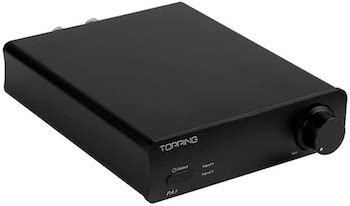 Weight: 1.14 lbs
Weight: 1.14 lbs
Power: 70W/8Ω (RMS)
DAC: No
What We Like: Punchy sound quality, friendly price.
What We Don't: As basic as they come.
If you have a DAC already, and all you want is a very basic amp for your desktop speakers, then we strongly recommend the Topping PA3. It really is one of the simplest amps we’ve ever seen, with no controls or additional features. Yet for all its simplicity, we dig the sound quality. It’s punchy enough to compete with amplifiers like the Onkyo A-9110, and at less than half the price. If all you need is something simple, then this is the amplifier to go for.
But look: the Topping PA3 is very much a budget amplifier. While that’s certainly not a bad thing, you need to temper your expectations as to what you are getting. The sound is good, without being spectacular— and you will of course need to supply a separate DAC (although these are inexpensive these days as well). It’s a good alternative to models like the more fully featured S.M.S.L AD 18.
See the Topping PA3
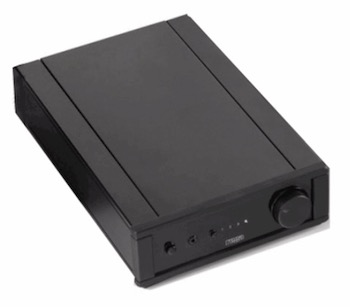 Weight: 6.4lbs
Weight: 6.4lbs
Power: 30W/8Ω (RMS)
DAC: No
What We Like: Fun sound with a good range of features.
What We Don’t: At this price, it would be to have some digital connectivity.
We are delighted to see Rega back on our list with the new io amp. The British company appeared here previously with their Brio, and although that amp is very old, the new Io reminds us why we loved it. It’s a mid-range amplifier that puts out fun, effective sound quality that has a lot more life than other similarly priced amps, like the Sonos Amp and Totem KIN Amp. There is an MM phono stage, as well as a headphone out. Although the io has fewer analog inputs than the Brio, we don’t think it’s a huge problem. For the most part, the io is a fun amp to listen to.
In our opinion, there is at least one glaring issue with the Rega io, and that the lack of digital connectivity. There is no DAC here. While we get that it’s clearly a deliberate choice, it does limit options somewhat, and it’s frustrating when less expensive amps manage to pack in excellent DACs. We are thinking specifically of the Denon PMA-600NE, which does a solid job. Even a simple DAC would have been good here, although it doesn’t stop us from recommending the io.
See the Rega Io
 Weight: 12.3lbs
Weight: 12.3lbs
Power: 35W/8Ω (RMS)
DAC: No
What We Like: All of Cambridge’s great design and sound in a wallet-friendly package.
What We Don’t: Frustrating remote control makes operation annoying.
The Cambridge Audio AXA35 is an enjoyable, if somewhat basic, stereo amplifier. The amp’s balanced and clean audio quality makes a great alternative to the thundering Onkyo A-9110 or the treble-minded Denon PMA-600NE, both of which are in the same price range. One of its big selling points is the design, which utilizes all of Cambridge’s helpful tricks, like upside-down labeling on the rear ports. The company already makes some of the best apps available right now—the CXA61 is currently in our top three, above— and it’s great to see them releasing a more wallet-friendly product.
It means that the AXA35 should be considered by anybody looking for a budget amp, although as we said, it doesn’t do anything that other amps don’t do already. There’s also no DAC, which may be a problem for those looking for a single box solution. Check out the aforementioned Denon if that’s you. We also had some issues with the remote, which felt floaty and imprecise. While the AXA35 definitely isn’t the best amp on this list, it’s good enough to be worthy of your consideration.
See the Cambridge Audio AXA35
| Stereo Amp | Price | Weight | RMS* | DAC? | Peak** | Dimensions |
|---|---|---|---|---|---|---|
| Peachtree Audio Carina | $1,999 | 15lbs | 300W/8Ω | Yes | 580W/8Ω | 14.25" x 14" x 4.3" |
| Cambridge Audio CXA61 | $599 | 18.3lbs | 60W/8Ω | Yes | Unavailable | 16.9" x 13.4" x 4.5" |
| Onkyo A-9110 | $349 | 15.4lbs | 50W/4Ω | No | Unavailable | 17.1" x 13" x 5" |
| Denon PMA-600NE | $499 | 15lbs | 90W/8Ω | Yes | Unavailable | 17.1" x 12.1" x 4.76" |
| Anthem STR | $5,000 | 40lbs | 200W/8Ω | Yes | Unavailable | 17.5" x 17" x 6.3" |
| S.M.S.L AD 18 | $150 | 3.2lbs | 80W/8Ω | Yes | Unavailable | 10.8" x 9.1" x 2.9" |
| NAD D3045 | $799 | 5.7lbs | 60W/8Ω | Yes | 80W/8Ω | 10.4" x 9.,3" x 2.8" |
| Heaven 11 Billie | $1,500 | 12lbs | 60W/8Ω | Yes | Unavailable | 14.25" x 8" x 2.75" |
| Parasound NC 200 Int. | $1,199 | 18.3lbs | 110W/8Ω | Yes | Unavailable | 17.25" x 14.75" x 2.5" |
| Hegel H95 | $2,000 | 23.4lbs | 60W/8Ω | Yes | Unavailable | 16.9" x 12.2" x 3.9" |
| Schiit Ragnarok | $1,499 | 32lbs | 60W/8Ω | Optional | Unavailable | 16" x 13" x 3.9" |
| Audiolab 6000A | $899 | 17.2lbs | 50W/8Ω | Yes | Unavailable | 17.5" x 13" x 3.15" |
| Sonos Amp | $899 | 4.6lbs | 125W/8Ω | Yes | Unavailable | 8.2" x 7.3" x 2.5" |
| Totem KIN Amp | $699 | 5.3lbs | 100W/8Ω | Yes | Unavailable | 10" x 9.25" x 2.3" |
| Marantz PM6007 | $699 | 16.7lbs | 45W/8Ω | Yes | Unavailable | 17.3" x 14.5" x 4" |
| Topping PA3 | $119 | 1.14lbs | 70W/8Ω | No | Unavailable | 6.6" x 4.7" x 1.5" |
| Rega io | $595 | 6.4lbs | 30W/8Ω | No | Unavailable | 7" x 11.4" x 2.68" |
| Cambridge Audio AXA35 | $399 | 12.3lbs | 35W/8Ω | No | Unavailable | 3.3" x 16.9" x 13.2" |
*RMS = RMS/Continuous Power
**Peak = Peak/Dynamic Power
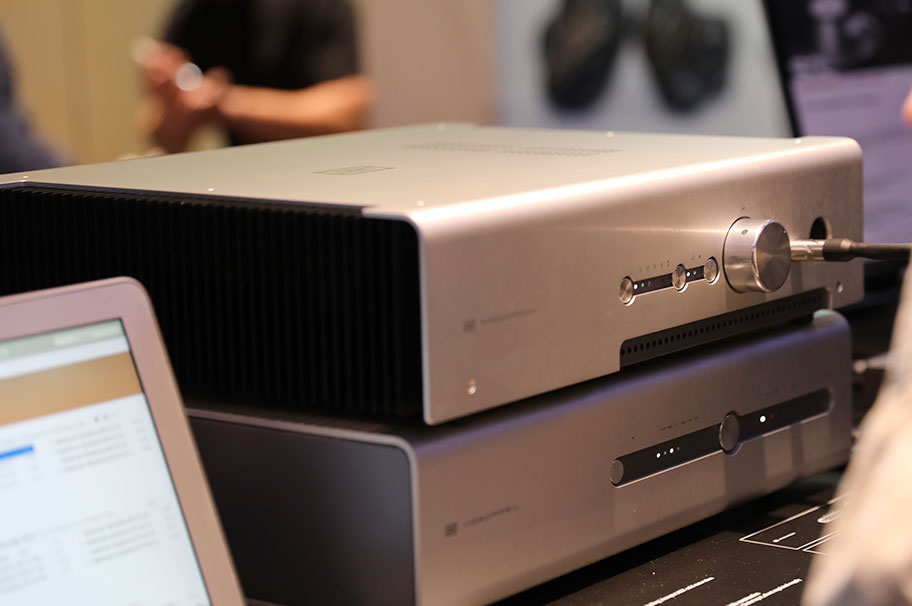
A stereo amp is the center of your hifi setup. When audio signals come from their source, they aren't very strong at all. In fact, if you heard them straight… well, you'd barely be able to hear them at all. At its most basic level, the stereo amplifier takes this source sound and makes it louder, using the current from its power supply to increase the overall volume of the sound. Furthermore, it uses its internal circuits to convert the sound into a format that your speakers can make sense of. Stereo amps also control where the sound is sent - each amp will have at least two channels that you can push the sound to. It will also sharpen and improve the sound, which is why some amps are so expensive! And as is our wont with these things, we like to point you in the direction of other bits you may need, such as bookshelf speakers.
We mentioned at the very start of this article that stereo amplifiers can run into five and six figures, and get there very quickly. So the question is: how much should you spend? For most people, $5,000 should be a realistic cap. Audiophiles will probably disagree with us on this, but we think that at some point, you start to reach a level of diminishing returns. This point is open to debate, but we think that north of about $5,000, quality differences start to level off. Sure, you'll get an amp that bucks the trend – very obviously, something like the ultra-pricey D'Agostino Momentum Integrated is going to be better than the $469 Denon PMA-600NE – but for the most part, what you're paying for as the price increases is more power.
Let's be honest: most of us simply don't need that much power. An amplifier that generates somewhere north of 100 watts per channel is almost certainly going to be sufficient for the vast majority of people. And as long as you pair an amp with a good set of speakers, there's absolutely no reason for you to break the bank. That being said: we do recommend that you put a little bit of money into your amplifier. It would be a waste to take a $3,000 amp and match it with a set of speakers that cost less than a sixth of that; your speakers just won't be able to fully express the details that the amp wants to show. So as a general rule, try to make the price of your amp match the price of your speakers – and if you have two choose, always pay more for your speakers. They are, by far, the most important part of your signal chain.
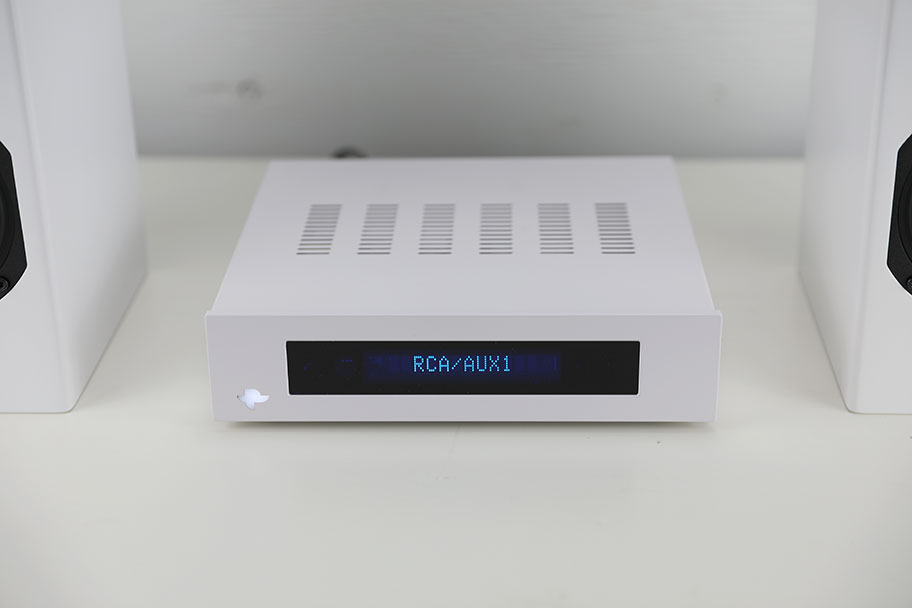
You may come across a puzzling little term as you peruse this particular product type: integrated amplifier. This is different from a power amplifier, and here's why. Every amp needs two things to do its job properly: a preamp stage, and a power stage. Together, these work to amplify the signal to a level that we can actually hear. If they're together in one box, they are known as an integrated amplifier. If they're separate, they are known as a preamplifier and an amplifier, and they will be discrete pieces of equipment - usually, if made by the same manufacturer, designed to be stacked on top of one another.
The advantages of separate pre and power amps are numerous. The foremost one is that you can swap out components as you see fit, allowing you to customise your sound. The disadvantages, of course, is that having two separate pieces of equipment is more expensive. For most people, it's much easier, and far more common, to buy an integrated amplifier, with both components contained in one housing. Very obviously, you can't swap things out further down the line, but the cost will be less, and the convenience is much greater. All the amps on our list above are, as we mentioned, integrated amps. Want to find out more about this topic? We have a full, in-depth explainer here!

Wattage, very simply, is the amount of power an amplifier puts out. It's not strictly analogous to volume – you can, after all, turn that up and down regardless of power – but it gives you an idea of how potentially loud and amplifier can be, and the kind of speakers it can power. When you're building your hi-fi system, it's a very useful thing to know.
You'll notice that, in the listings for our amplifier picks, we've included listings for RMS, or continuous wattage. This refers to the overall volume of the amplifier over a long period of time – while this period varies, depending on the manufacturer, it's generally considered to be a good indicator of how much power the amplifier will put out at average listening levels. Please, by the way, don't ask us to explain what RMS (Root Mean Square) means. The math defeats us.
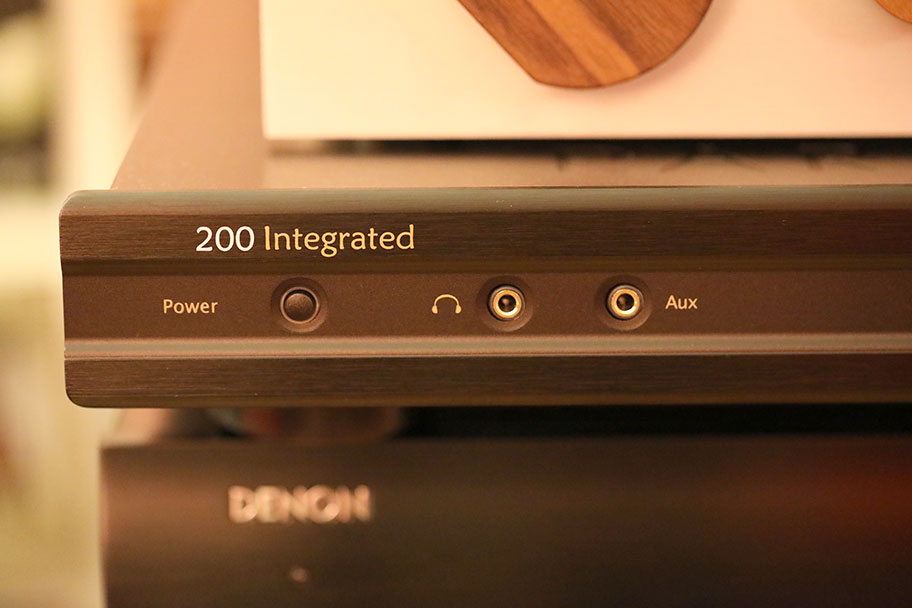
Peak wattage, which we've included in our table where possible, is the absolute maximum the amplifier can put out: a single short burst of power. Really, that's it. Average versus peak. And many manufacturers don't even bother giving the peak, which makes things very easy indeed! Some do though, and it can be handy when choosing speakers. The Peachtree Audio Carina is a good example - 300 watt RMS, a monstrous 450 peak.
You almost never need to pay attention to the peak power – chances are if you pump things that loudly, you're going to damage your hearing. But knowing these two values gives you a good idea of just how powerful an amplifier can be, and it's very useful when you're working out which speakers you should match to your amp. There's a whole guide to doing it right here, which will answer every question you have. And please believe us when we say it's not complicated. It just takes a little time to explain!
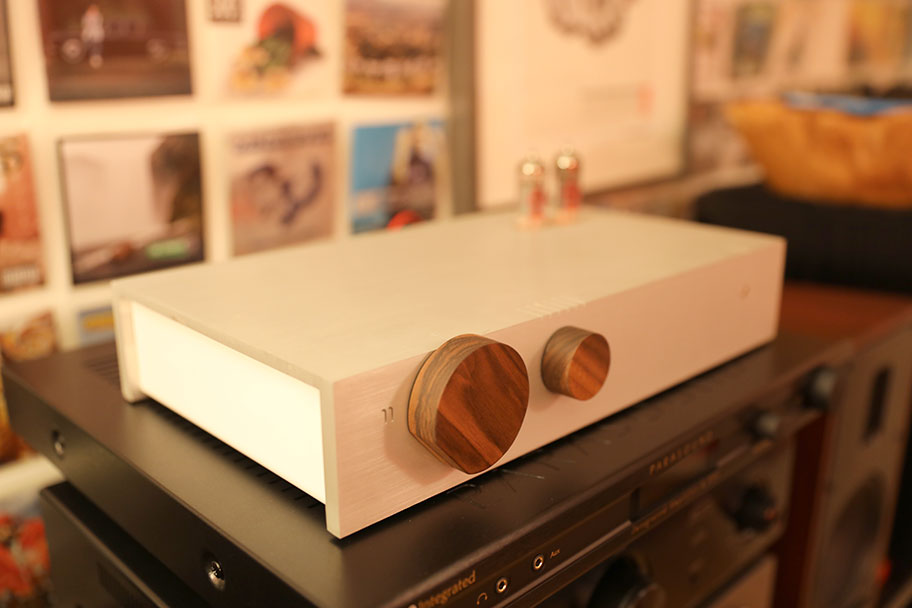
DACs are Digital to Analog Converters. Your audio exists as ones and zeros until it passes through one of these, whereupon it is converted into electrical signals that are used to power the speakers, which then give you sound. You need one of these. The good news is, chances are your audio source has them already - especially if it's a laptop, tablet, phone, or CD player. The bad news? These might not be very good, and it can be worth investing in a separate DAC.
Not every amp on our list has a DAC built in, either. Make sure you check before you buy. If we had to pick the amplifier with the best DAC, we'd probably go for something like the $1,195 Parasound NewClassic 200 Integrated, which offers absolutely superb conversion. It's not quite our favorite amplifier, but purely in terms of this, it takes the cake.
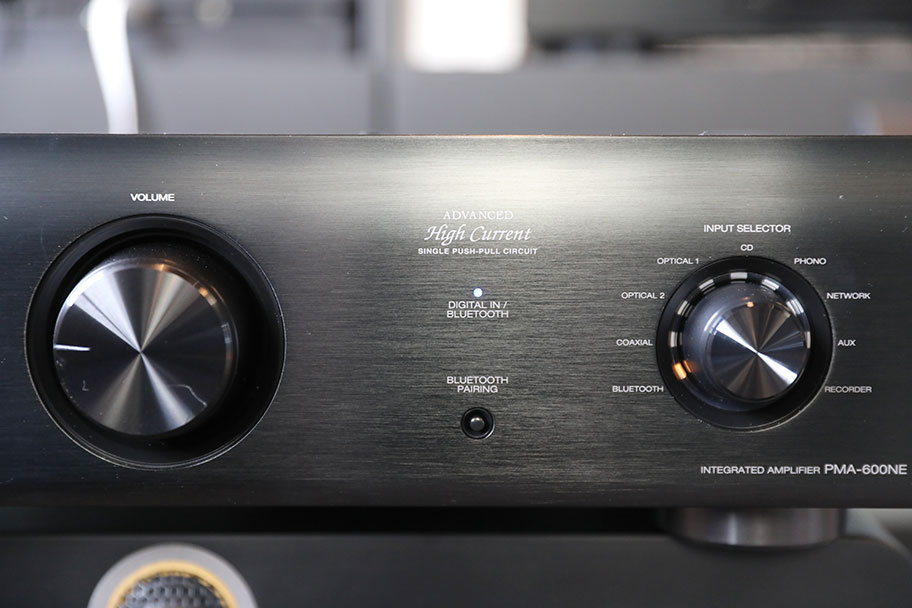
Don't get hung up on the different types of amps. While it's always handy to know the difference between Class T, Class AB, tube, monoblock and the like - and we've highlighted some of the differences in the models here - amp quality is high enough now that this is something you can comfortably leave out of your buying decisions, if you want to. Your amp choice should be guided by the number of channels you need, your existing setup, your sources and the space you have available. That being said, this sort of thing is always good to know. So, in short order, here is a sampling of some of the more common jargon.
A common type, where both output stages are always on. What this means in practice is that distortion is very low, although the amps aren't very efficient.
A type where only one output stage can be on at once, which improves power efficiency at the expense of sometimes adding distortion at the crossover points between frequencies.
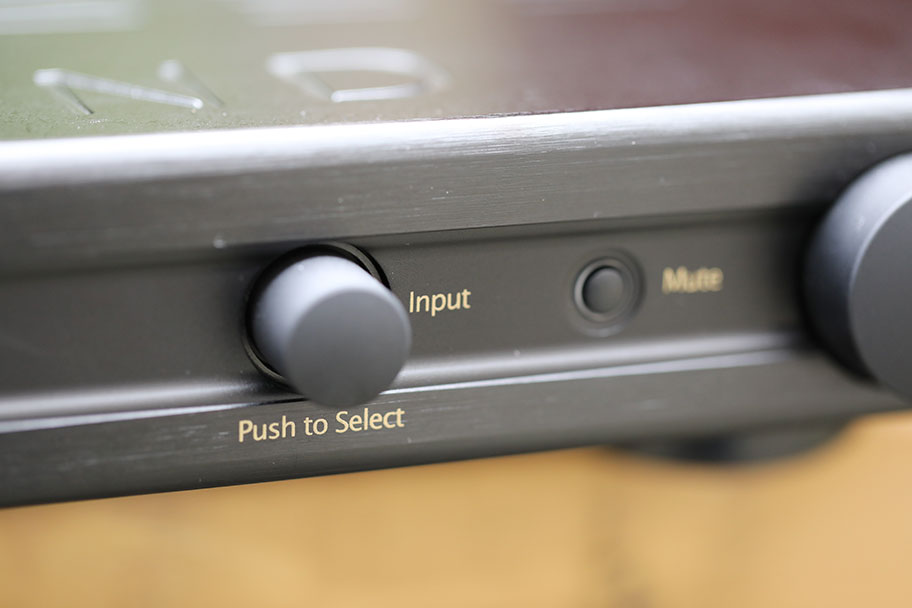
As you might have guessed, this is a hybrid of the above two types that maximises the advantages while eliminating the disadvantages. Amps that have this circuit are reasonably efficient, and have limited distortion. A good example of this type would be the Cambridge Audio CXA61.
A type which uses active transistor switches. The electrical explanation is a bit complicated, and what it comes down to is this: Class Ds are highly efficient, and are often smaller and lighter than other models. They also don't run nearly as hot. Note that if you see Class T anywhere, it's a variation of this type, made by Tripath. You actually won't find many of these - Orb Audio's old Mini-T, now discontinued, used to be one of the few in this class.
Something you'll often see in more expensive models. Usually, a single amp powers both channels, but in monoblock systems, each channel has a separate mono amplifier. More power, better sound. There aren't any monoblocks on our list.
Sometimes known as valves, these tiny glass cylinders are responsible for the soft, squidgy warmth that some amps are known for. Not a typical feature of stereo amps - they are usually found more commonly in headphone amps - but they do appear sometimes. For example, see the Heaven 11 Billie.
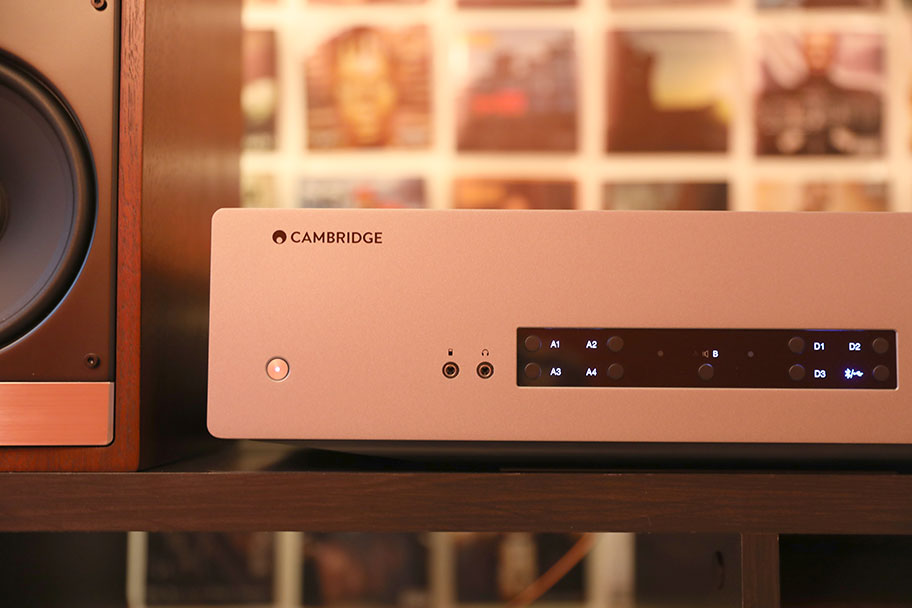
A channel is a single source of sound; your iPhone, for example, would be one channel (yes, we know an iPhone can play stereo, but work with us here). The actual circuitry needed to handle a single channel sound isn't that complex, and in cheap amps - which typically have fewer channels - you won't be paying as much for high-end components. This is a roundup of stereo amps, and stereo, by definition, means two. You can, however, pick up models with more than two channels, which allow you to add multiple speakers as well as things like subwoofers. Obviously, we recommend doing this, as it will broaden and deepen your sound. We go into subs in more detail below.
When you start adding channels – which you will be doing very quickly if your audio setup is even a little bit complex – things change. Suddenly, you're looking at things like high-end digital-to-analog converters, specialized tubes and valves, and even heatsinks in the case of very large amps. All of these components color the sound, giving it a pleasing character, and pretty soon you'll find you're paying as much for the sound quality as you are for the actual hardware. That's without talking about the options a good amp will give you to control the sound; expect to find EQ sections and other filters to allow you to customize the sound to your particular environment.
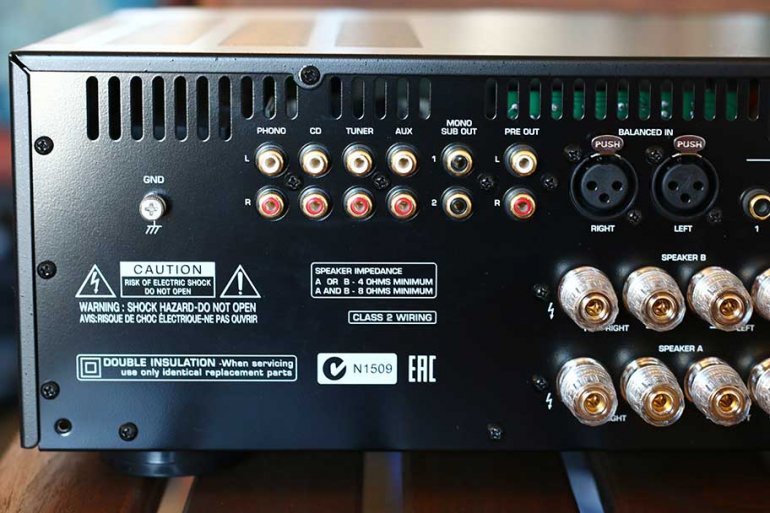
One of the things that amplifier manufacturers like to do is deluge you with stats and specs, without actually telling you what they mean. That means that wading through the technical details of an amplifier can be a royal pain in the neck! Here at TMS, we take issue with this sort of thing. So, we're going to break down some of the more obscure specs you'll see in manufacturer webpages. The good news is that, for most people, these simply won't need to be considered, which is why we haven't mentioned them in our comparison table above. Audiophiles will certainly pay attention to them, but things like wattage are usually far more important in determining whether an amplifier can slot into your setup or not.
Sometimes referred to as THD+N (the N stands for Noise), this measures what the amplifier does to the sound that comes through it – in other words, how much it's changed from when it enters the amplifier to when it exits. Obviously, unless you're dealing with things like tube amps, where you want a little bit of coloration, you want this number to be as low as possible. The good news: it is! In almost all cases with modern amps, the THD is so low as to be practically non-existent. Perfect example: the Anthem STR, which has a THD+N of…wait for it…0.02%. Whenever somebody tells you that THD is crucial to measuring how good an amplifier is, you have our permission to laugh at them. Unless the THD is over 1%, you can safely ignore it.
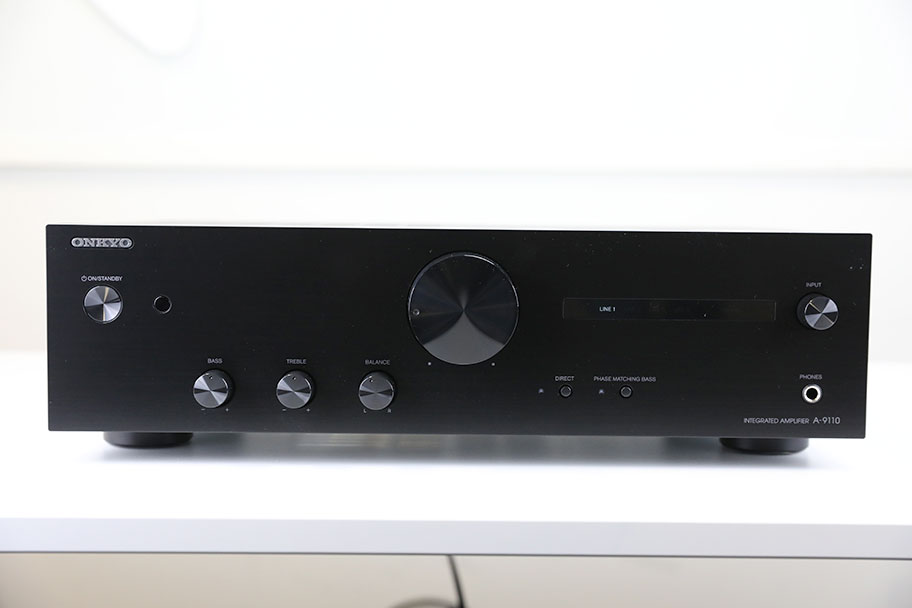
In addition to the music being put through it, every amplifier will make a little bit of noise on its own. It's made up of electrical components, after all, and these sometimes make noise in the operation. A signal-to-noise ratio is a measure of just how loud this noise is – or rather, how many decibels, in comparison, that the amp can pump out. Counterintuitively, the larger the number (which is measured in decibels), the better the SNR. Again, you can safely ignore this, because if an amp has a signal-to-noise ratio bad enough to need mentioning, it's not going on our list.
We've already talked about amplifier channels, and crosstalk is simply a measure of how well an amplifier separates the sounds in the channels. If it does it badly, then you won't be able to pick out stereo separation, and things will sound muddled. Like SNR, this is measured in decibels, only with a minus sign (-) in front of it. The larger the number behind the minus sign, the better the stereo separation will be. This one is a little more important than SNR and THD+N, but only a little.
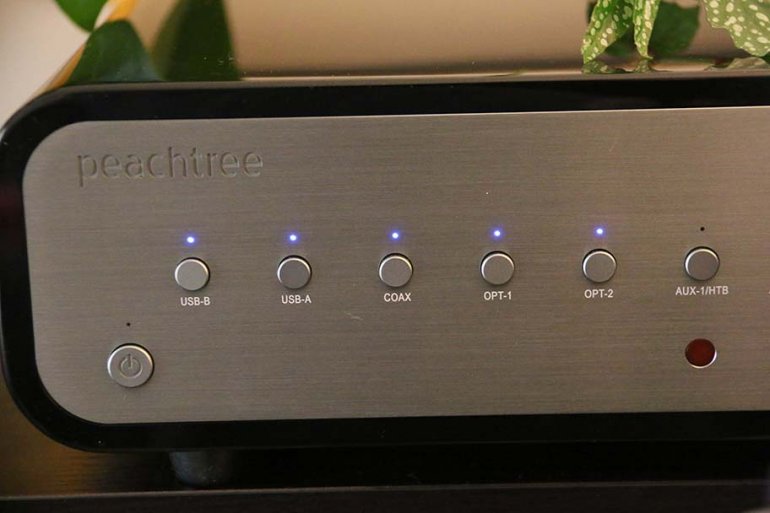
We touched on this in a previous section, so let's go into more detail. Not every amplifier on this list will be set up to handle subs. Those that are, like the Peachtree Audio nova300, have a discreet subwoofer output on the rear, and technically could be counted not as true stereo amplifiers, but rather, amps that offer 2.1 functionality.
You don't technically need a subwoofer. Not every listening setup is going to have a requirement for it, or even the space to have one. But our take is that your system will always be better with the low-end filled out by a dedicated system, and if you have the space, and the budget, pick up an amplifier that can handle it. The good news is that you won't need to worry about the amplifier devoting power to the subwoofer. In 99.9% of cases, the subwoofer will draw its own power from the mains, and all you need to do is route an audio signal to it, which can be done using a simple RCA cable. Win!
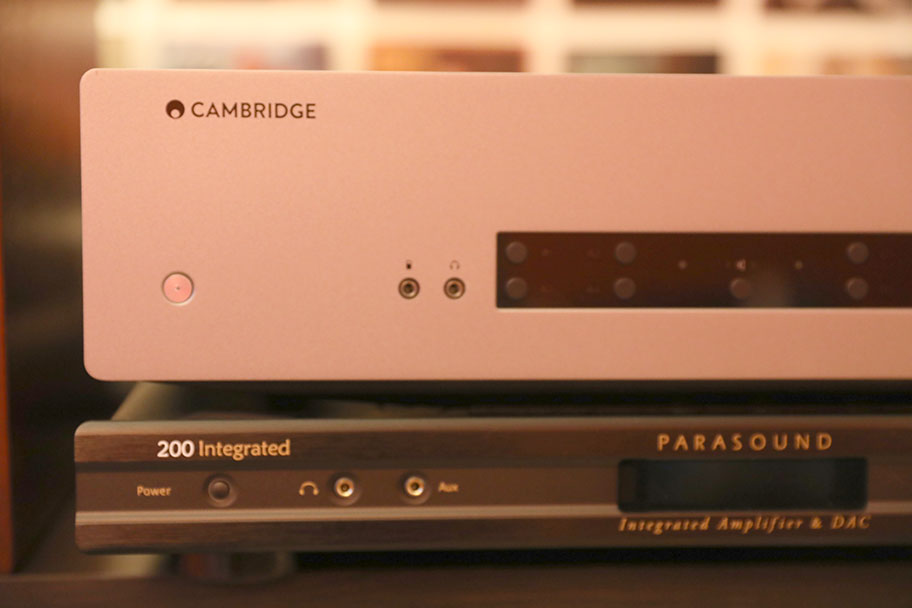
Normally, we don’t put a lot of emphasis on the weight of a piece of equipment. It’s nice to know, in terms of being aware of your chiropractor bill after you’ve pushed it into place, but it’s not essential. With amplifiers, that’s a little more complicated.
Put simply, good amplifiers rely on good power management, and the equipment to manage power well is often heavy. One of the easiest signs of a good amplifier is that it makes you grimace when you lift it. Compare something like the Peachtree Audio nova300, number one on our list, with the Sonos Amp. The latter weighs 4.6lbs, while the former clocks in at 17lbs. Guess which one has better power management? However: newer power supplies and lighter components mean this rule is a lot less hard and fast than it used to be. When it comes to things like power amplifiers, it’s still very much applies, but in the case of integrated amplifiers, you can see it as a guideline more than anything else.